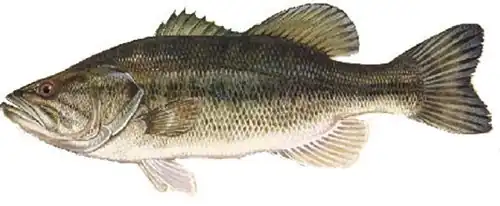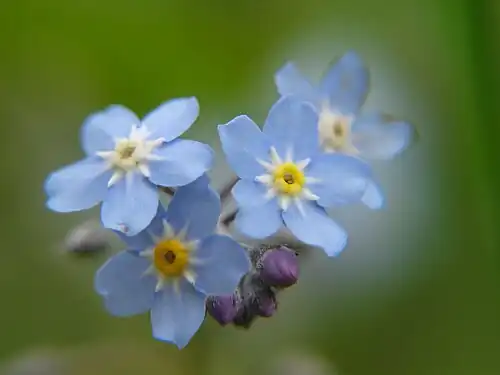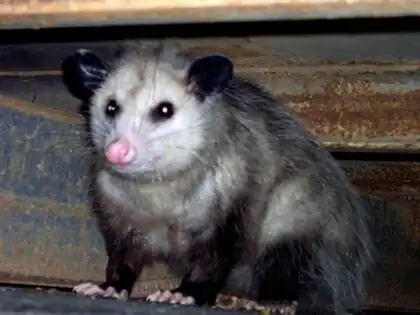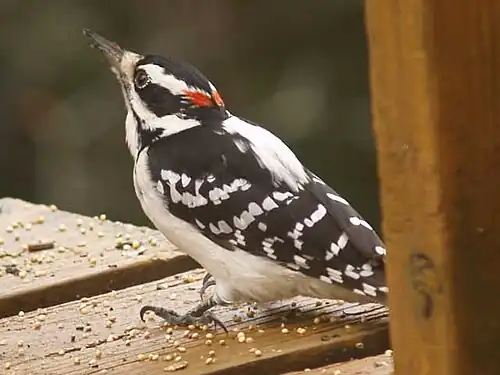Menomonie, Wisconsin History/Local Species
The Local Species of Menomonie, Wisconsin refers to species in the City of Menomonie in Dunn County, Wisconsin. The area shows aspects of both Northern and Southern Wisconsin species, such as the northern prominent American Black Bear, and southern common Thirteen-Lined Ground Squirrel. Like the rest of Wisconsin, Menomonie has a wide variety of bird species, allowing for bird watching and hunting to be enjoyed. It also has a variety of wetlands and lakes, with a fish population ready for fishing, but not without other problems. Most species here for at least thousands of years, with few suffering extinction (such as the Passenger Pigeon) and some migrating from Europe and other parts of the world.
Tertiary Life
Dunn County shares a myriad of species with the rest of Wisconsin, and though they vary in rarity, they all have important ecological niches to fill. While Wisconsin has very few snake and other reptile species, the warm-blooded birds and mammals can handle the colder Winter temperatures, or can simply migrate in the bird's case.
Mammals[1]
Small Mammals (Rodents and kin)
- Eastern Grey Squirrel
- Least Weasel
- Cottontail Rabbit
- Field Mouse
- House Mouse
- Black Rat
- Brown Rat
Medium Mammals (Small game and others)
- Striped Skunk
- Muskrat
- American Beaver
- Common Raccoon
- Coyotes
- Red Fox
- American Badger
- Woodchuck
- Brown Fox
Large Mammals (Ungulates and Carnivores)
- White-tailed Deer
- Black Bear
- Grey Wolf
Marsupials
Reptiles[2]
Snakes and Lizards
- Smooth Green Snake
- Western Fox Snake
- Common Gartersnake
- Brown Snake
- Northern Redbelly Snake
- Northern Watersnake
- Prairie Skink
Turtles and Tortoises
- Painted Turtle
- Snapping Turtle
- Wood Turtle
Amphibians[2]
- Green Frog
- Tope's Grey tree Frog
- Blanchard's Cricket Frog
Common Birds[3]
Owls
- Snowy Owl
- Great Horned Owl
- Barn Owl
- Barred Owl
Aquatic Based Birds (Ducks, Herons, etc.)
- Common Loon
- Wood Duck
- Great Blue Heron
- Sandhill Crane
- Whooping Crane
- Killdeer
- Ring-billed Gull
- California Gull
- Belted Kingfisher
- Canada Goose
Hawks, Eagles, and Falcons
- Turkey Vulture
- Bald Eagle
- Red-tailed Hawk
- Osprey
- Peregrine Falcon
Doves and Pigeons
- Mourning Dove
- Common Ground Dove
- Rock Dove (Pigeon)
Shrikes, Chickadees, and Thrushes
- American Robin
- Northern Shrike
- Black-capped Chickadee
Finches and Sparrows
- American Goldfinch
- House Finch
- Purple Finch
- House Sparrow
Cardinals and Grosbeaks
- Northern Cardinal
- Rose-breasted Grosbeak
- Indigo Bunting
Swallows
- Barn Swallow
- Tree Swallow
Waxwings
- Cedar Waxwing
Woodpeckers
- Pileated Woodpecker
- Hairy Woodpecker
Game Birds
- Wild Turkey
- Ring-necked Pheasant
- Ruffed Grouse
Crows, Ravens, and Jays
- American Crow
- Common Raven
- Blue Jay
Hummingbirds
- Ruby-throated Hummingbird
Insects and Spiders[4]
Insects (Flies, Bees, and kin)
- House Fly
- Honey Bee
- American Bumblebee
- Cranefly
- Giant Mayfly
- Mosquito
- Blue Dasher
Beetles, True Bugs, and Others

- American Cockroach
- Ladybug
- Boxelder Bug
- Big Dipper Firefly
- Common Pillbug
- Hister Beetle
- Milkweed Bug
- Brown Marmorated Stink Bug
- Silverfish
Crickets and Hoppers
- Carolina Locust
- House Cricket
- Periodical Cicada
Moths and Butterflies
- Luna Moth
- Banded Woolly Caterpillar Moth
- Monarch Butterflies
Arachnids
- American House Spider
- Banded Garden Spider
- Black-legged Tick
- Black and Yellow Garden Spider
Aquatic Life
Menomonie has a large population of game fish, mostly species of Bass and other small fish for frying. However, Lake Menomin, the main lake of Menomonie, is notorious for its large algae blooms, dissuading fishermen and other possible lakefront property buyers. This also has negative effects on the ecosystem, causing the water to be low in oxygen, causing trouble for purely aquatic species, and increases turbidity, or the measurable murkiness of the water.

Fish[5]
- Bass
- Black Crappie
- Bluegill
- Bullhead
- Catfish
- Muskellunge
- Northern Pike
- Panfish
- Walleye
- Yellow Perch
.jpg)
Shellfish
- Red Swamp Crayfish
- Zebra Muscles
Water Weeds and Others[6]
- Bladderwort
- Coontail
- Duckweed
- Eel-Grass
- Elodea
- Giant Reed
- Northern Water-milfoil
- Spiny Naiad
- Watermeal
- White Water Lily
Plant Life
Due to Menomonie's temperate climate, it, like the rest of northern Wisconsin, is populated with plants species adapted to survive cold winters and warm summers. Most of the tree species are rough and hard, while the plant species are rough and not-so delicate. It has its share of both broad-leafed angiosperms and needled gymnosperms, both contributing to the ecosystem in their own way; while wild White-tail Deer prefer acorns from the Oak trees, Mourning Doves prefer nesting in the thick branches of a Spruce tree.
Angiosperms[7]
Alder
- Speckled Alder
Ashes
- Black Ash
- White Ash
- American Mountain Ash
- Green Ash
Aspen
- Big-tooth Aspen
- Quaking Aspen
Birches
- Paper Birch
- River Birch
- Yellow Birch
- Heart-leaved Birch
Elms
- American Elm
- Rock Elm
Fruit Trees
- Apple
- Butternut
- Wild Plum
- Canadian Plum
- Chokecherry
- Black Cherry
- Pin Cherry
- Staghorn Sumac
- Northern Hackberry
Hawthorn
- Sugar Hawthorn
- Fireberry Hawthorn
- Dotted Hawthorn
- Fleshy Hawthorn
Hazels
- American Witch-hazel
Hickory
- Yellow-bud Hickory
Locusts
- Black Locusts
_C30-1.jpg)
Maples
- Silver Maple
- Sugar Maple
- Red Maple
- Mountain Maple
- Box Elder
Oaks
- Bur/Burr Oak
- White Oak
- Northern Red Oak
- Hill's Oak
- Black Oak
Willows
- Weeping Willow
- Bebb's Willow
-Woods
- Eastern Cottonwood
- Ironwood
- American Basswood
- Muscle-wood
- Alternate-leaved Dogwood
Gymnosperms[7]
Pines
- Jack Pine
- Red Pine
- White Pine
.jpg)
Cedars
- Eastern Red-cedar
- White Cedar
Firs
- Balsum Fir
Hemlocks
- Eastern Hemlock
Tamarack
- Tamarack
Spruces
- Black Spruce
- Blue Spruce
- White Spruce
Junipers
- Common Juniper
Yew
- American Yew
Flowering Plants[8]
Spring
- Dandelion
- Blue Violet
- Canada Violet
- Trout Lily
- Starflower
- Twin Flower
- Forget-me-not
- Tall Buttercup
- Large Flowered Bellwort
- Columbine
- Moccasin Flower

Summer
- Ox-eyed Daisy
- Purple Clover
- Alsike Clover
- Wild Rose
- Bergamot Orange
- Birds-foot Trefoil
- Bush Honeysuckle
- Skunk Current
- Jack-in-the-pulpit
- Pink Pyrola
- Mustard
- Yellow Bullhead Lily
- Pitcher Plant
- Blue Flag Iris
- Harebell
- Wild Ginger
- Water Hemlock
- Yarrow
- Bloodroot
- Barren Ground Strawberry
- Wild Oats
- Milkweed
- Bunchberry
- Wintergreen
- Blue-eyed Grass
- Fireweed
- Leatherleaf
- Pickerel Weed
External Links
https://en.wikipedia.org/wiki/List_of_birds_of_Wisconsin
http://dnr.wi.gov/topic/Invasives/documents/NR40Aquatics.pdf
https://www.uwgb.edu/biodiversity/herbarium/trees/tree_list_by_Latin.htm
References
- ↑ Wisconsin Department of Natural Resources. (n.d.). Retrieved December 15, 2015, from http://dnr.wi.gov/topic/wildlifehabitat/furbearers.html
- 1 2 Wisconsin Department of Natural Resources. (n.d.). Retrieved December 10, 2015, from http://dnr.wi.gov/topic/wildlifehabitat/herps.asp
- ↑ List of birds of Wisconsin. (n.d.). Retrieved December 10, 2015, from https://en.wikipedia.org/wiki/List_of_birds_of_Wisconsin
- ↑ Wisconsin Insects and Bugs. (n.d.). Retrieved December 15, 2015, from http://www.insectidentification.org/insects-by-state.asp?
- ↑ Wisconsin Department of Natural Resources. (n.d.). Retrieved November 17, 2015, from http://dnr.wi.gov/lakes/lakepages/LakeDetail.aspx?wbic=2065900
- ↑ Aquatic Plant Identification. (2015). Retrieved December 17, 2015, from http://www.lakeandpondsolutions.com/helpful-info/aquatic-plant-identification
- 1 2 Trees of Wisconsin: List of angiosperm trees. (n.d.). Retrieved December 15, 2015, from https://www.uwgb.edu/biodiversity/herbarium/trees/tree_list_by_Latin.htm
- ↑ Baker, C. (n.d.). Wildflowers of Northern Wisconsin. Retrieved December 17, 2015, from http://www.whipinvasives.org/pdfdocuments/wildflowers.pdf

.jpg)
